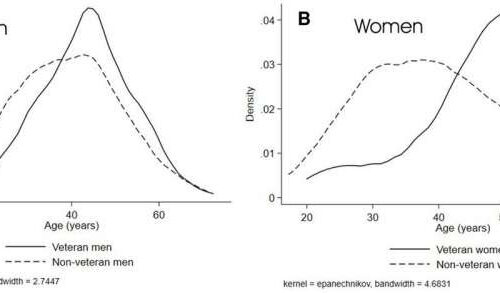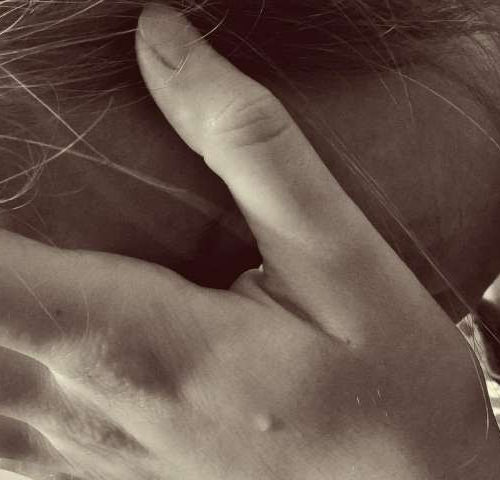by University of Glasgow Kernel density plot of age at suicide, veterans and non-veterans. (A) men (B) women. Credit: DOI: 10.1136/oemed-2021-107713 Scottish veterans face the highest risk of suicide in middle age, many years after leaving service. The study, led by the University of Glasgow in partnership with the Forces in Mind Trust and published in...
Tag: <span>suicide</span>
Suicide and drug addiction in young people: Two interconnected phenomena
by University of Montreal Credit: Unsplash/CC0 Public Domain The idea that alcohol, cannabis, and other drug abuse and dependence disorders lead to suicidal tendencies in adolescents and young adults is being challenged by the results of a new study in PLOS ONE conducted at Université de Montréal and CHU Sainte-Justine children’s hospital. “For the first time ever, our...
New screening tool improves ability to identify patients at risk of suicide
by Sarah Avery, Duke University Credit: Pixabay/CC0 Public Domain A suicide screening tool developed by researchers from Duke Health and the Department of Veterans Affairs is far more accurate at identifying patients at risk for attempting suicide than current clinical assessments, which often have poor accuracy rates that can lead to the loss of life. With suicide rates on the...
Why do people kill themselves?
Suicide refers to when someone harms themselves with the intent to end their life. The reasons that people attempt suicide are varied and complex, but they often involve severe emotional or physical pain that a person finds unbearable. This information comes from Suicide Awareness Voices of Education (SAVE). It can be difficult for people to understand why someone...
One in four women with ADHD has attempted suicide
by University of Toronto Credit: CC0 Public Domain Attention Deficit Hyperactive Disorder (ADHD) can have negative consequences on mental health into adulthood. A nationally representative Canadian study reported that the lifetime prevalence of suicide attempts was much higher for women who had ADHD (24%) compared to women who had not (3%). Men with ADHD were also more likely to have attempted suicide compared to men without ADHD (9% vs. 2%). “ADHD casts...
Doctors should change the way that they ask patients about self-harm and suicide
UNIVERSITY OF EXETER Doctors can better help patients with mental health concerns by adopting a different questioning style around self-harm and suicide, experts have said. New research warns patients may find it difficult to disclose thoughts of self-harm because of the way in which GPs ask about them. Academics who examined consultations found that GPs...
Why do veterans take their own lives? New study finds surprising answers
GEORGE MASON UNIVERSITY IMAGE: DR. FARROKH ALEMI, PROFESSOR OF HEALTH INFORMATICS, LED THE STUDY THAT FOUND THAT SOCIAL DETERMINANTS OF HEALTH ARE PREDICTORS OF SUICIDE OR SELF-HARM, BUT THEY ARE NOT NECESSARILY THE CAUSE. Suicide is the tenth leading cause of death in the United States – and in some age groups, it’s even higher – the second leading...
Could suicide risk be predicted from a patient’s records?
by Children’s Hospital Boston Suicide is now the second most common cause of death among American youth. Fatal suicides rose 30 percent between 2000 and 2016, and 2016 alone saw 1.3 million nonfatal suicide attempts. Now, a study led by Boston Children’s Hospital and Massachusetts General Hospital demonstrates that a predictive computer model can identify...
Emergency department study reveals patterns of patients at increased risk for suicide
by National Institutes of Health A new study found that people who presented to California emergency departments with deliberate self-harm had a suicide rate in the year after their visit 56.8 times higher than those of demographically similar Californians. People who presented with suicidal ideation had suicide rates 31.4 times higher than those of demographically...
Suicide and self-harm risk is nearly triple in people with restless leg syndrome
Posted Today Restless legs syndrome was associated with a nearly tripled risk of suicide and self-harm in a new study led by Penn State researchers. Using Big Data, the researchers found that people with restless legs syndrome (RLS) had a 2.7-fold higher risk of suicide or self-harm, even when the researchers controlled for such conditions...







